Strigarum Arcana
Il Mazzo dei Tarocchi delle Streghe - The Witches Tarot Deck
I 22 Arcani Maggiori dei Tarocchi - The 22 Major Arcana of the Tarot
Nel 2024 questo progetto prendera vità con una campagna crowdfunding.
Se sei interessato per rimanere aggiornato scrivi una mail a: a.ardoq@gmail.com
mettendo in oggetto "Strigarum Arcana" e il tuo nome.
Se sei interessato per rimanere aggiornato scrivi una mail a: a.ardoq@gmail.com
mettendo in oggetto "Strigarum Arcana" e il tuo nome.
In 2024, this project will come to life with a crowdfunding campaign.
If you are interested in staying updated, please write an email to: a.ardoq@gmail.com,
with the subject line 'Strigarum Arcana' and your name.
If you are interested in staying updated, please write an email to: a.ardoq@gmail.com,
with the subject line 'Strigarum Arcana' and your name.
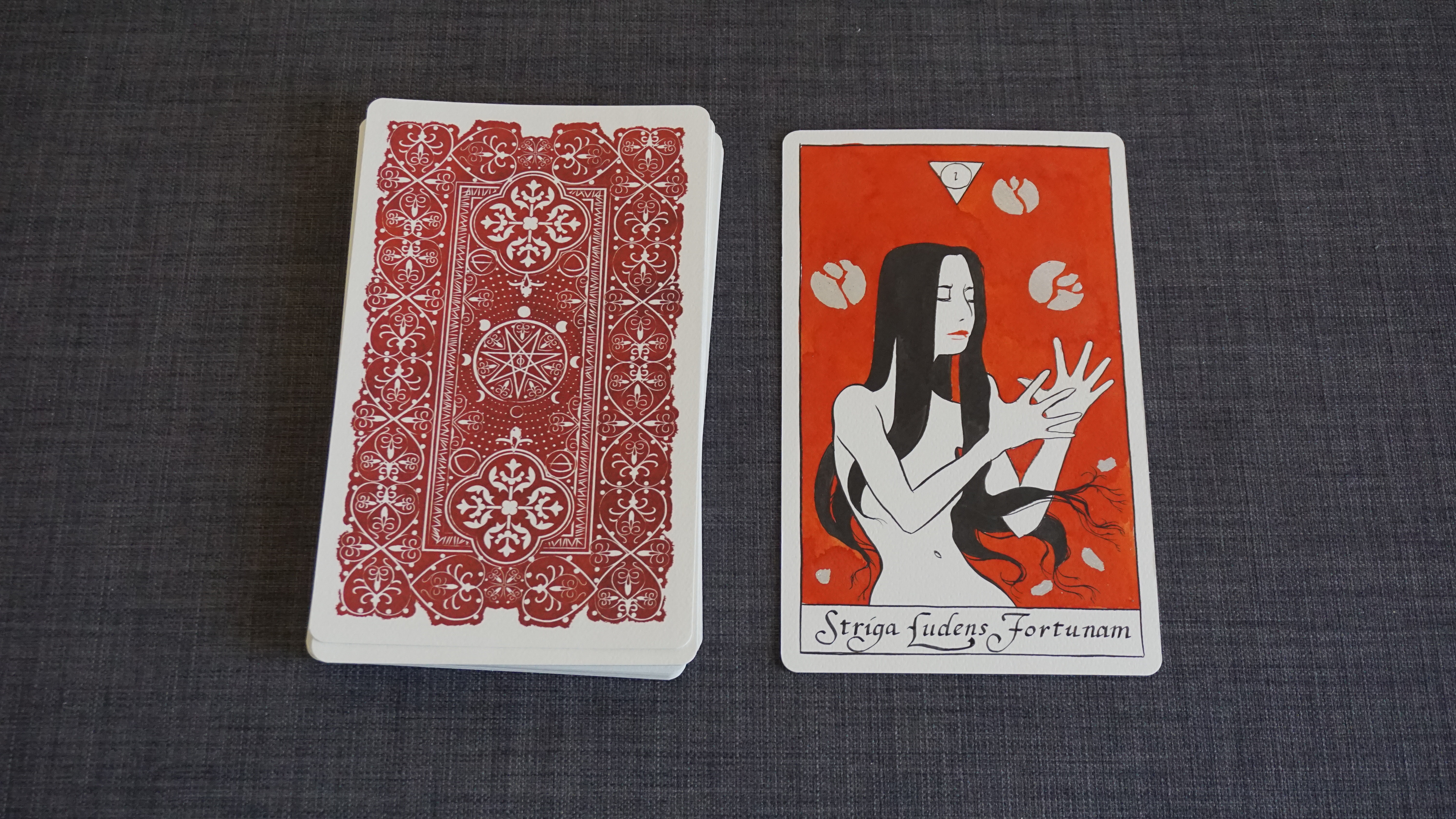
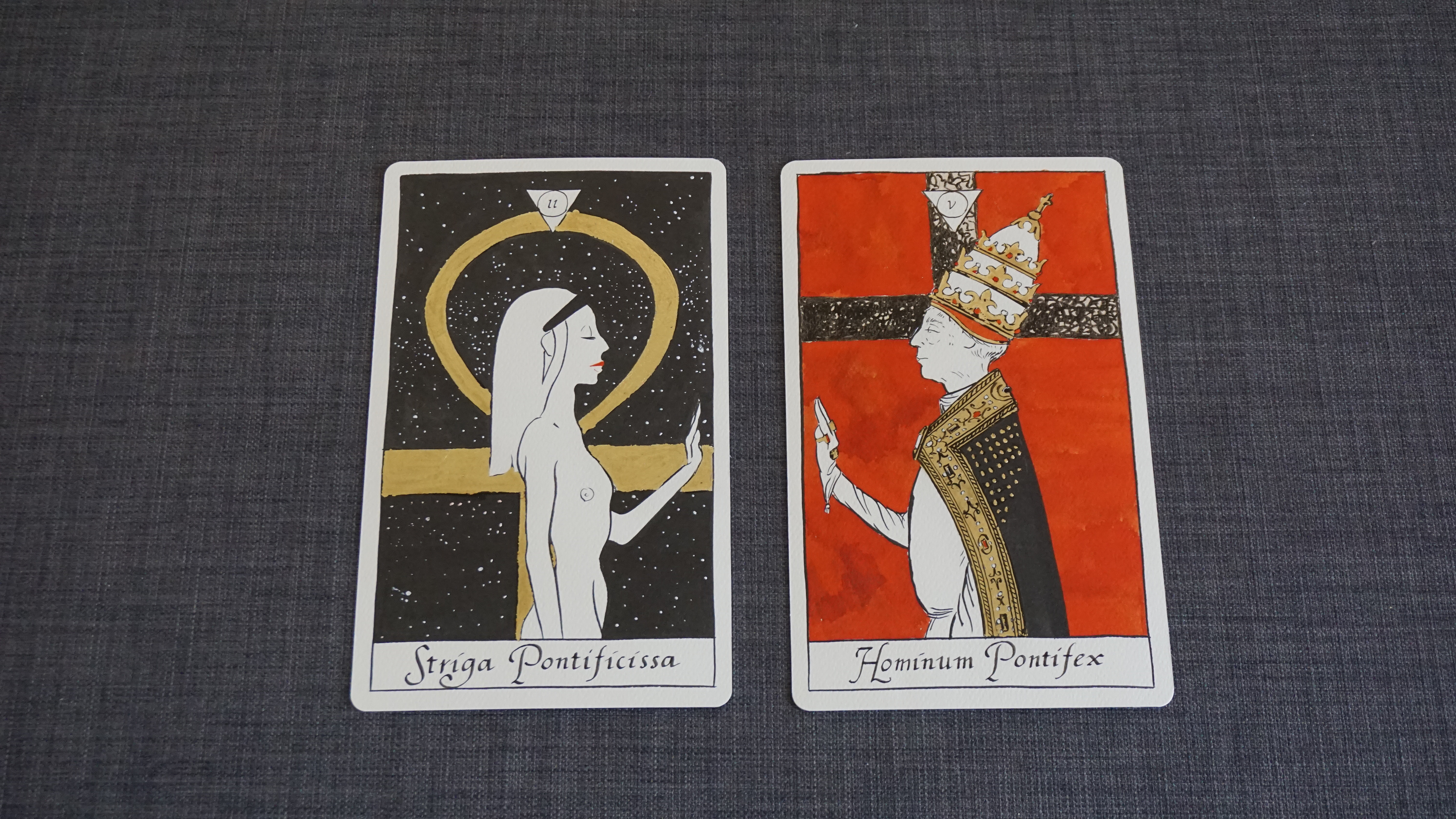
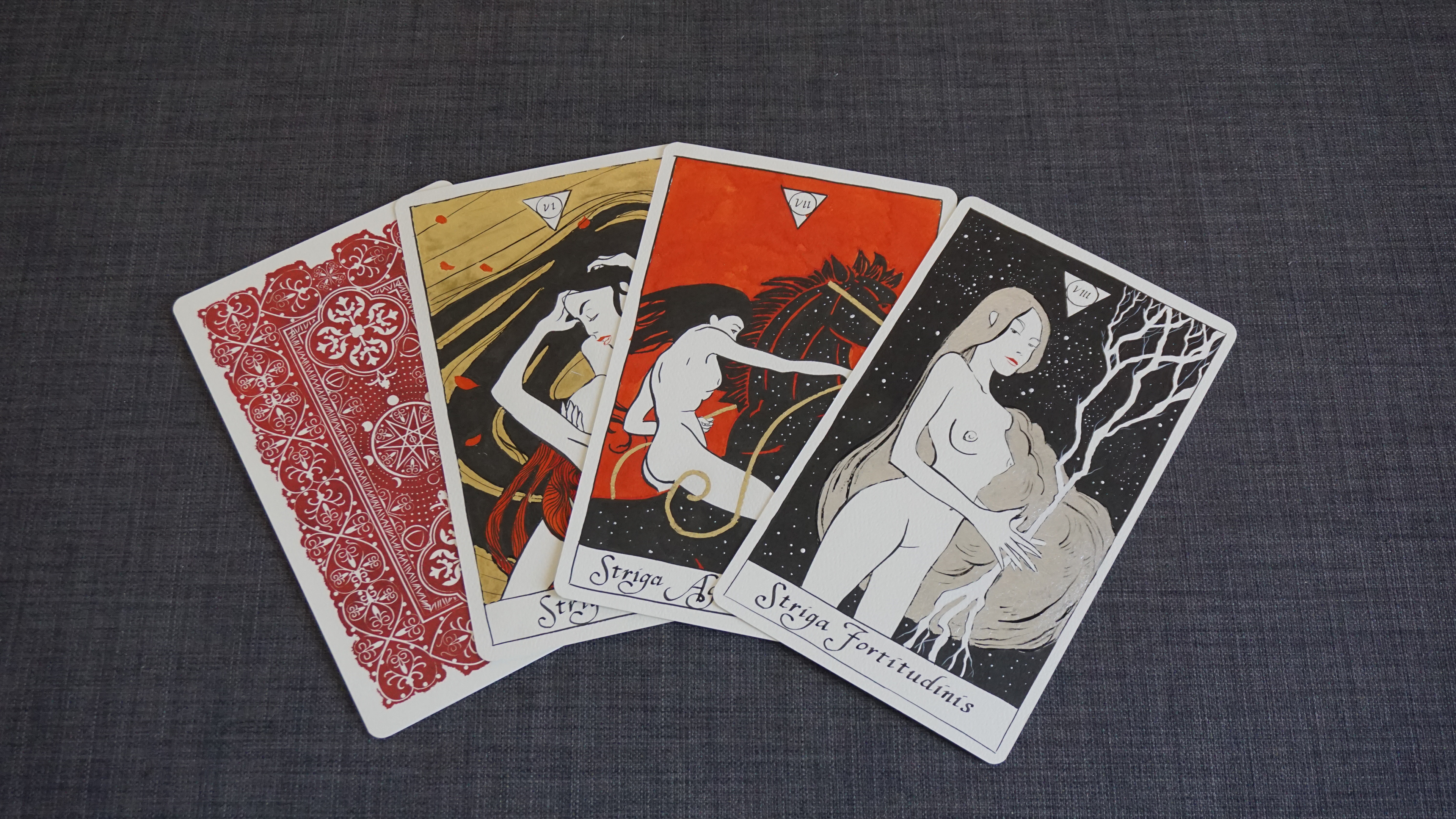
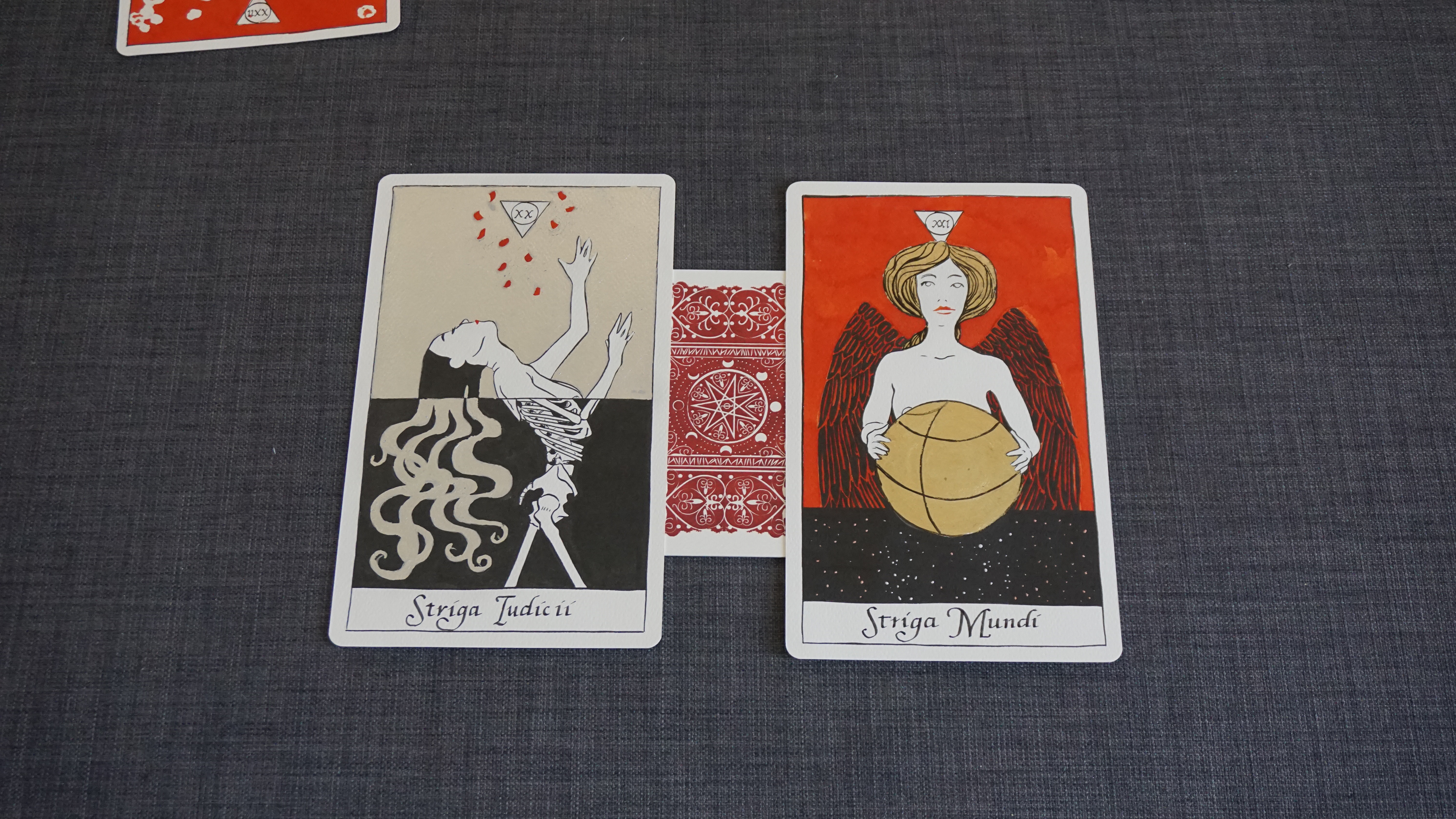

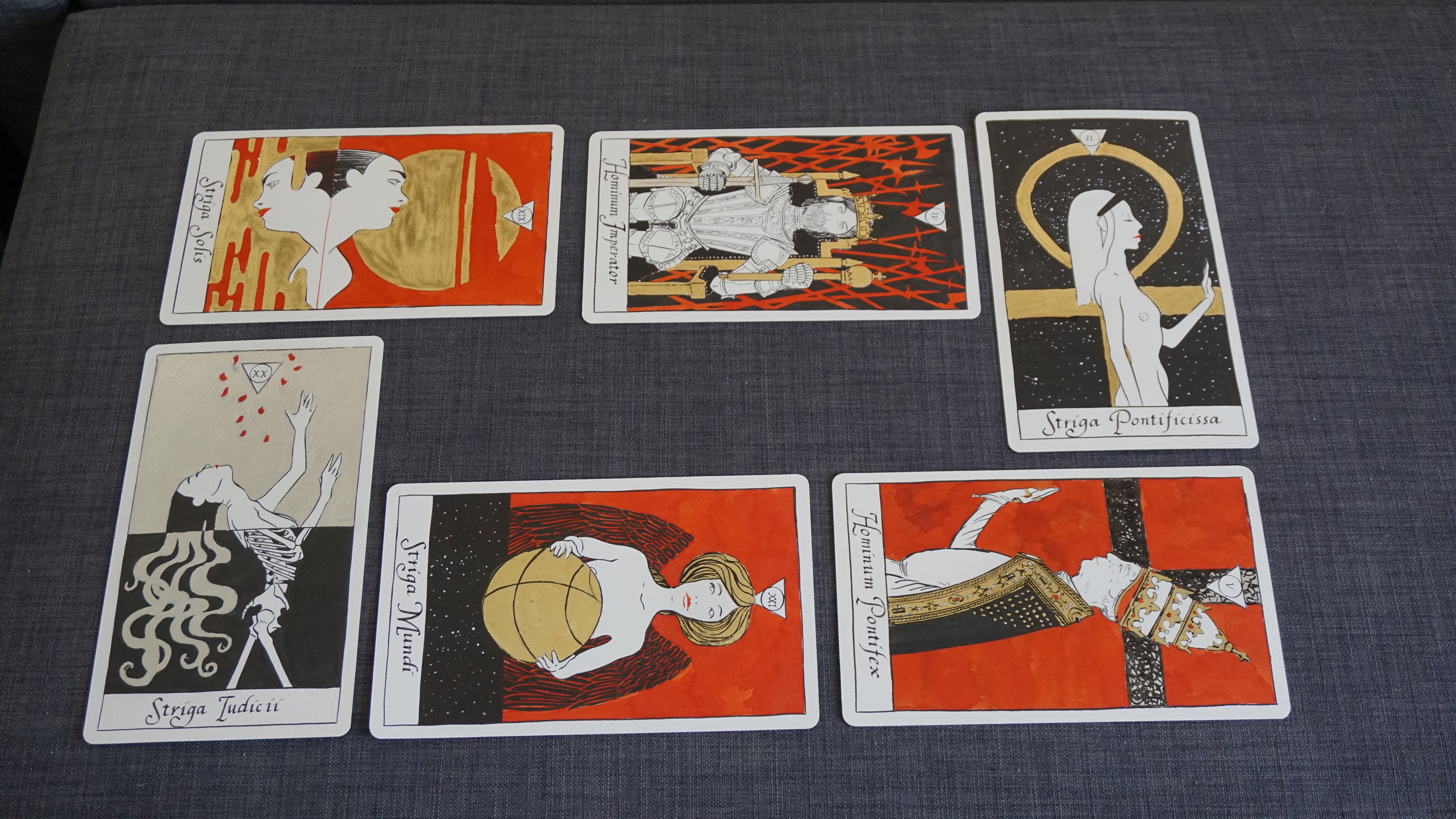
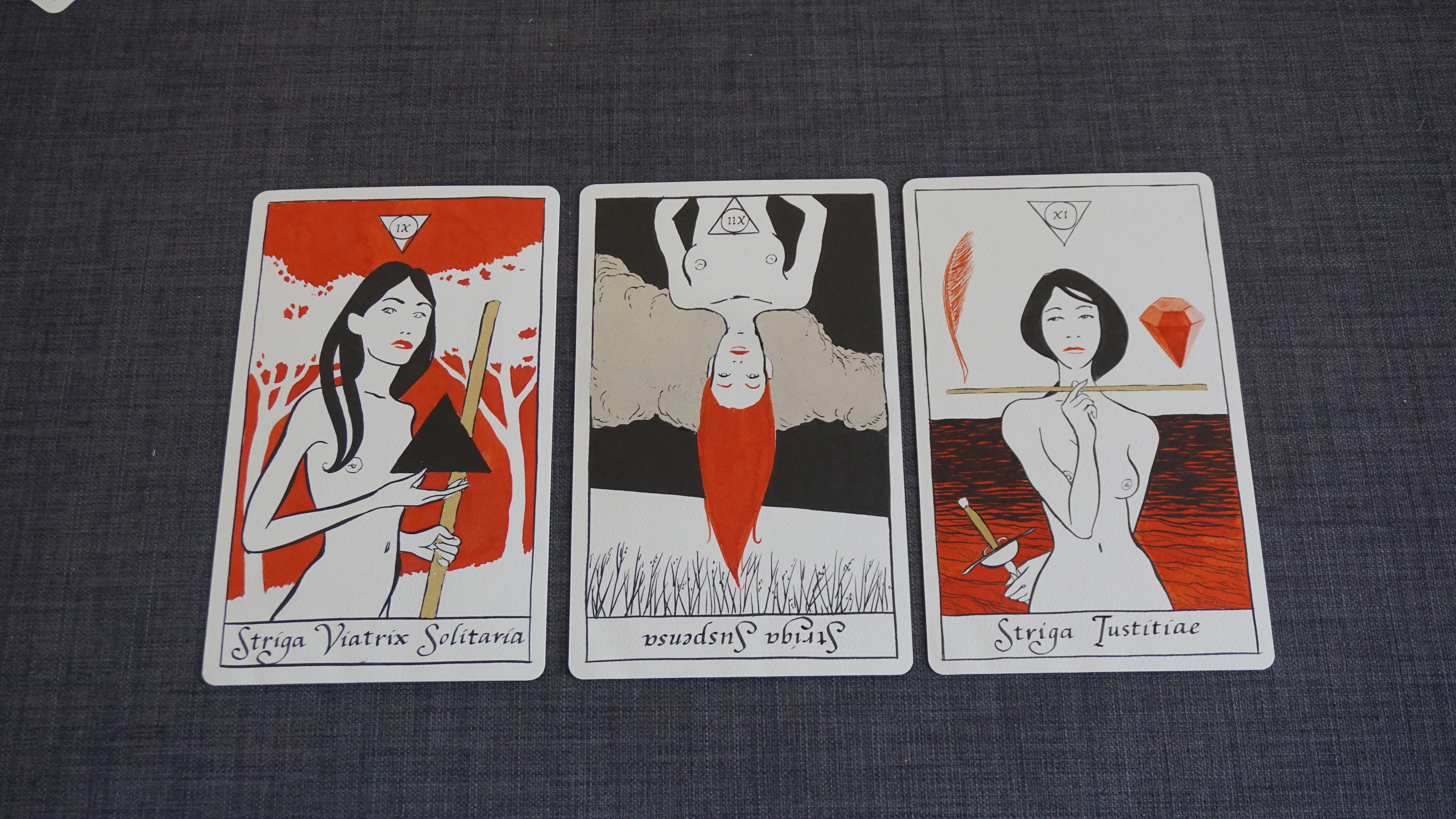
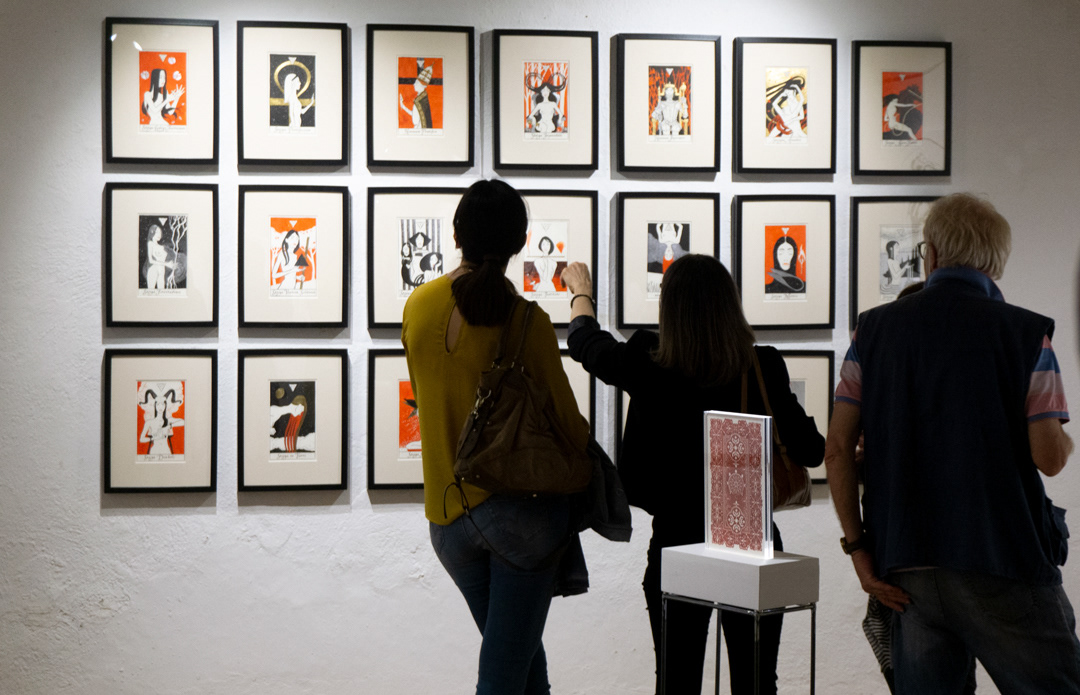
Inchiostro di china al carbone, foglia d'oro e foglia d'argento su carta
dimensioni 15 x 25 cm
Japanese carbon ink, gold leaf and silver leaf on paper
dimensions 15 x 25 cm
dimensions 15 x 25 cm
01 - Striga Ludens Fortunam (Il Bagatto / Le Bateleur / The Magician)
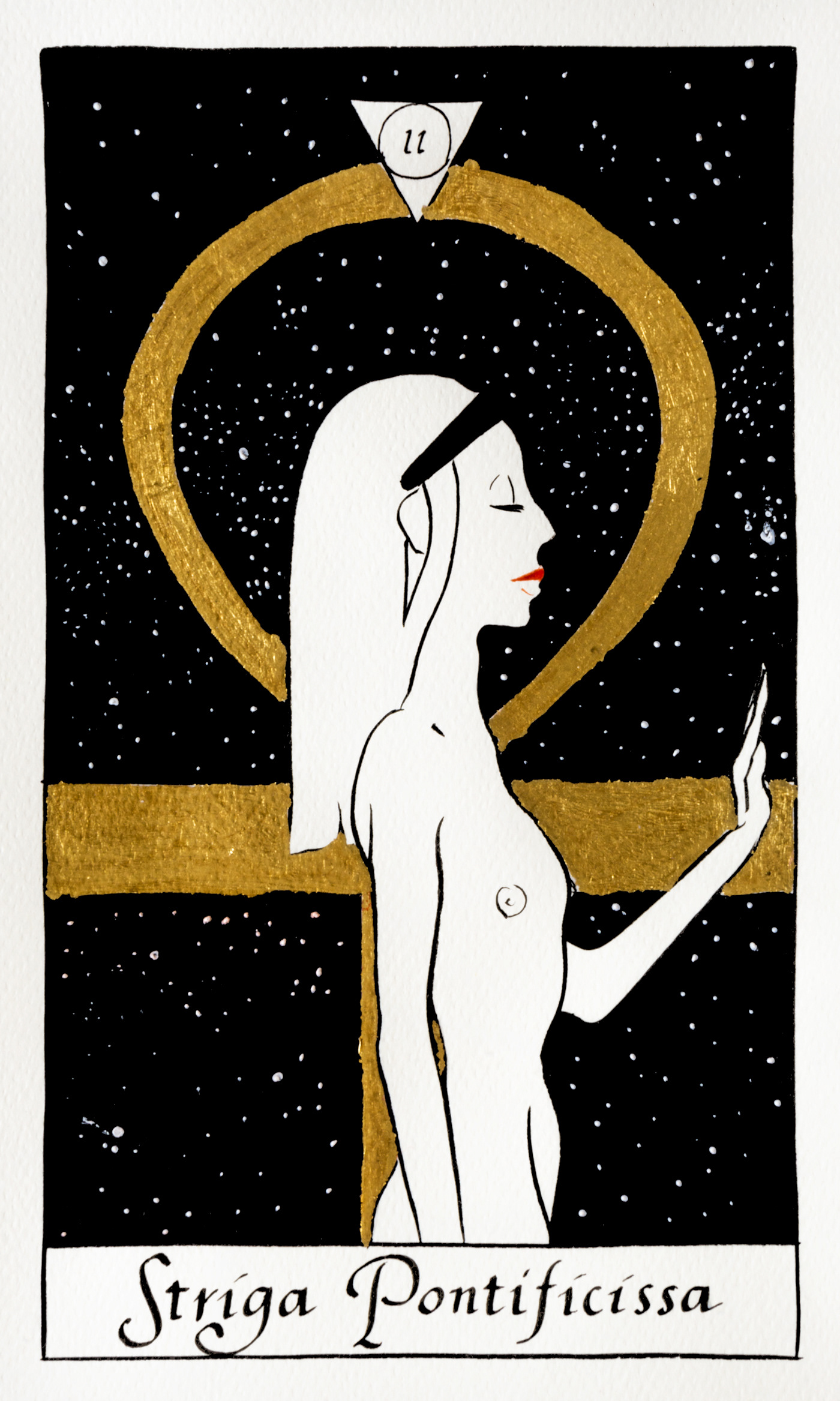
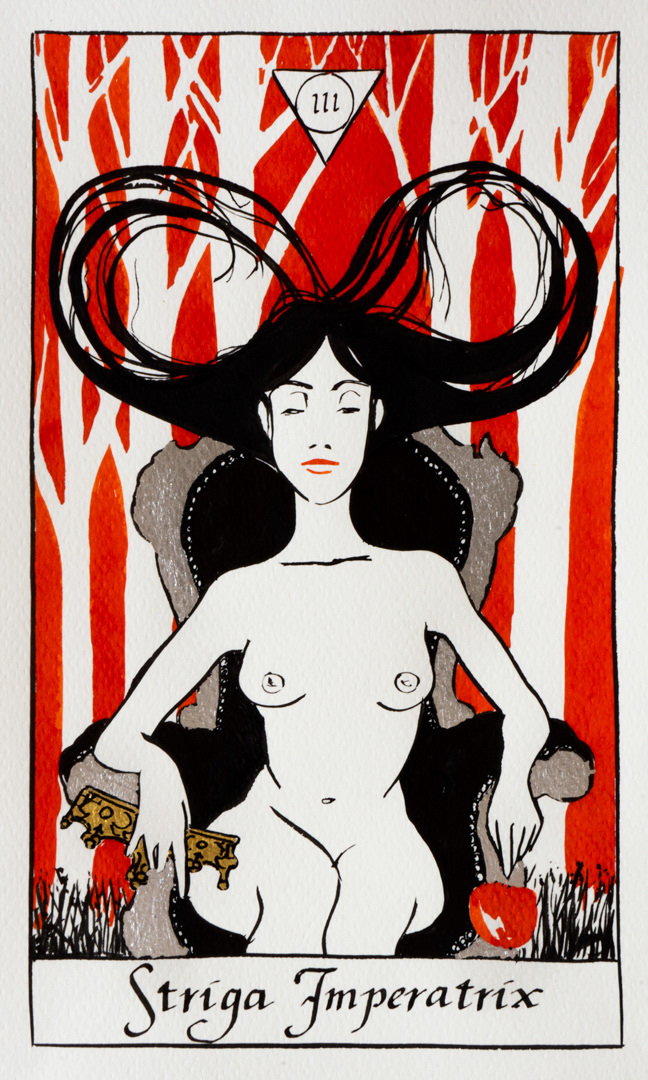
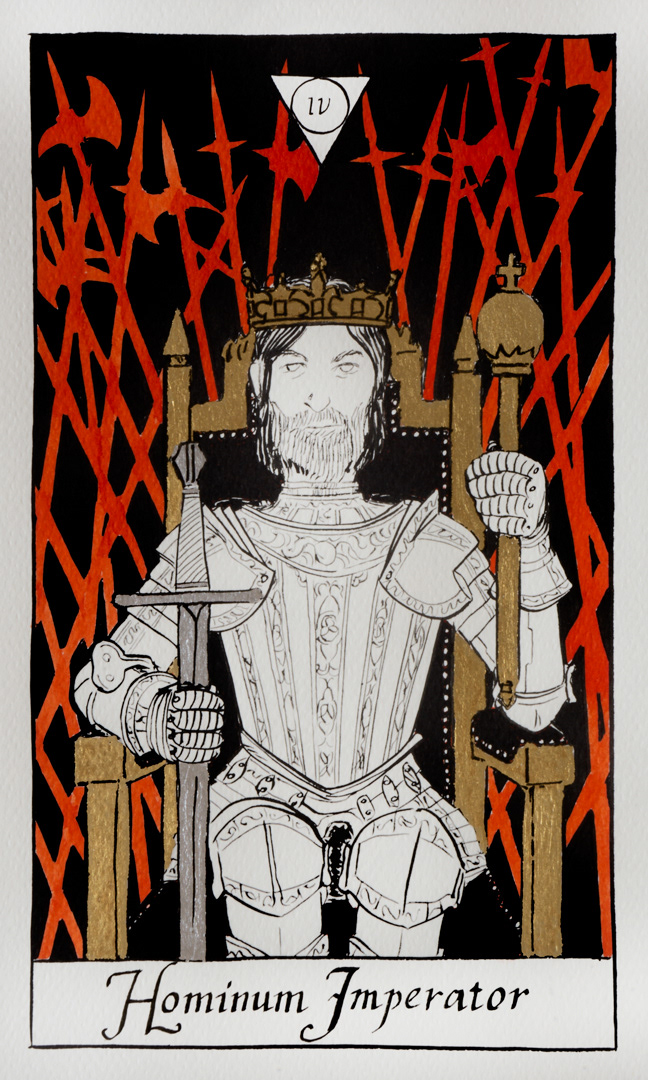
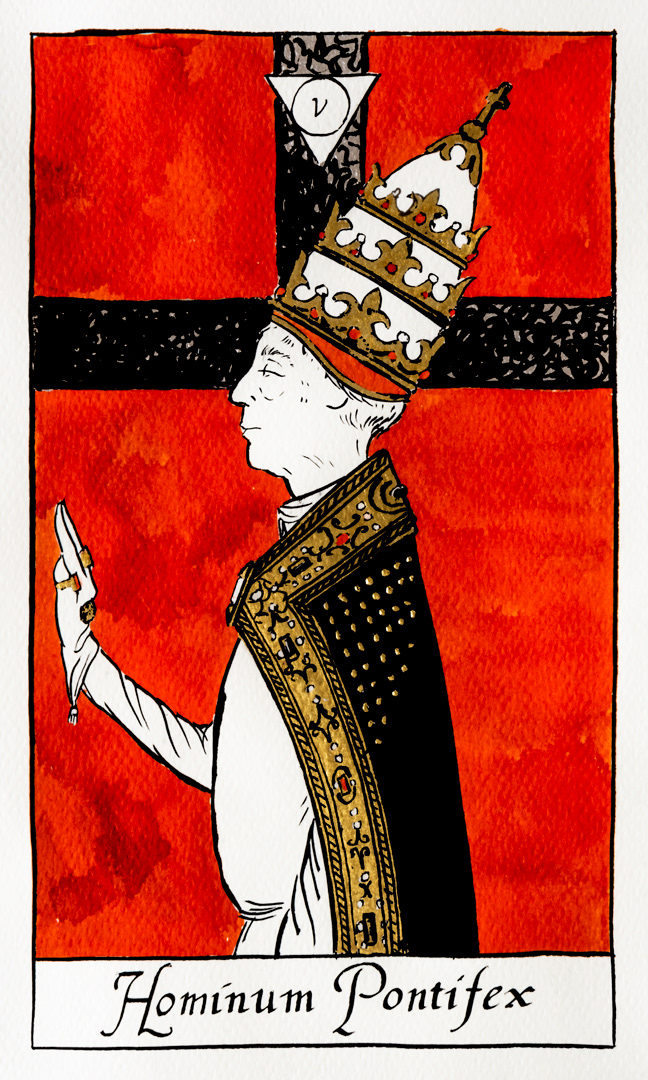
02 - Striga Pontificissa (La Papessa / La Papesse / The High Priestess)
03 - Striga Imperatrix (L'Imperatrice / L'Impératrice / The Empress)
04 - Hominum Imperator (L'Imperatore / L'Empereur / The Emperor)
03 - Striga Imperatrix (L'Imperatrice / L'Impératrice / The Empress)
04 - Hominum Imperator (L'Imperatore / L'Empereur / The Emperor)
05 - Hominum Pontifex (Il Papa / Le Pape / The Hierophant)


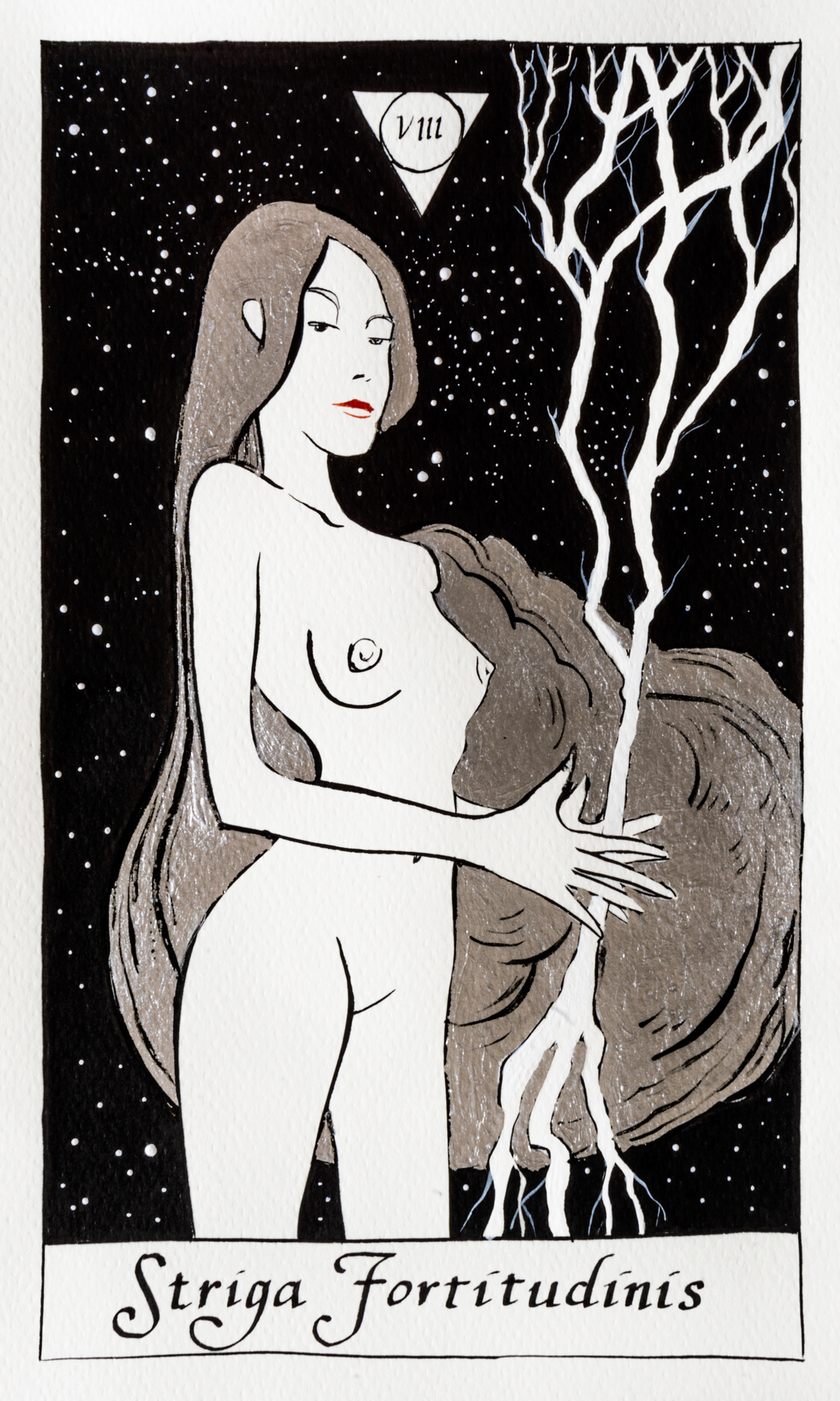
06 - Strigae Amantes (Gli Amanti / Les Amoureux / The Lovers)
07 - Striga Agens Fatum (Il Carro / Le Chariot / The Charriot)
08 - Striga Fortitudinis (La Forza / La Force / The Strenght)
07 - Striga Agens Fatum (Il Carro / Le Chariot / The Charriot)
08 - Striga Fortitudinis (La Forza / La Force / The Strenght)
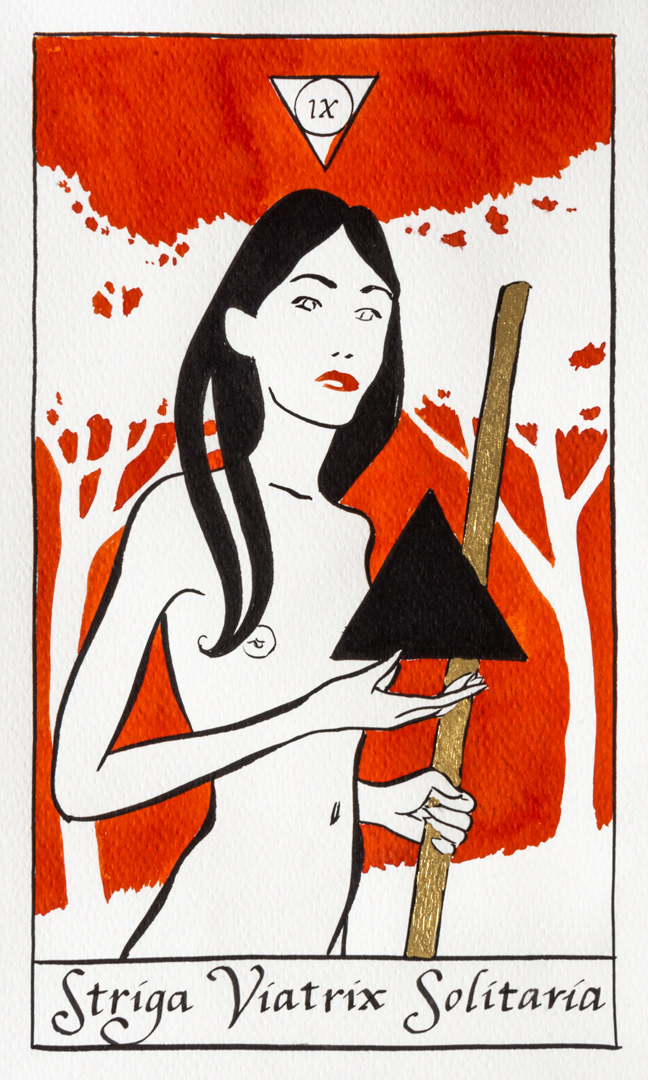
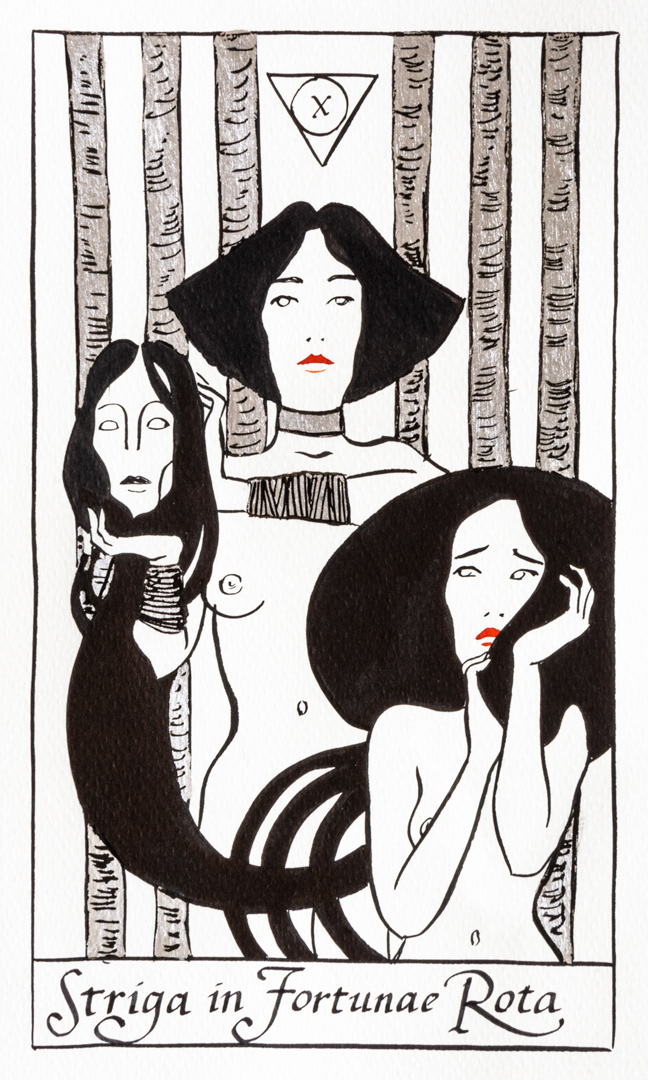


09 - Striga Viatrix Solitaria (L'Eremita / L'Ermite / The Hermit)
10 - Striga in Fortunae Rota (La Ruota della Fortuna / La Roue de Fortune / The Wheel of Fortune)
11 - Striga Iustitiae (La Giustizia / La Justice / The Justice)
10 - Striga in Fortunae Rota (La Ruota della Fortuna / La Roue de Fortune / The Wheel of Fortune)
11 - Striga Iustitiae (La Giustizia / La Justice / The Justice)
12 - Striga Suspensa (L'Appeso / Le Pendu / The Hanged Man)
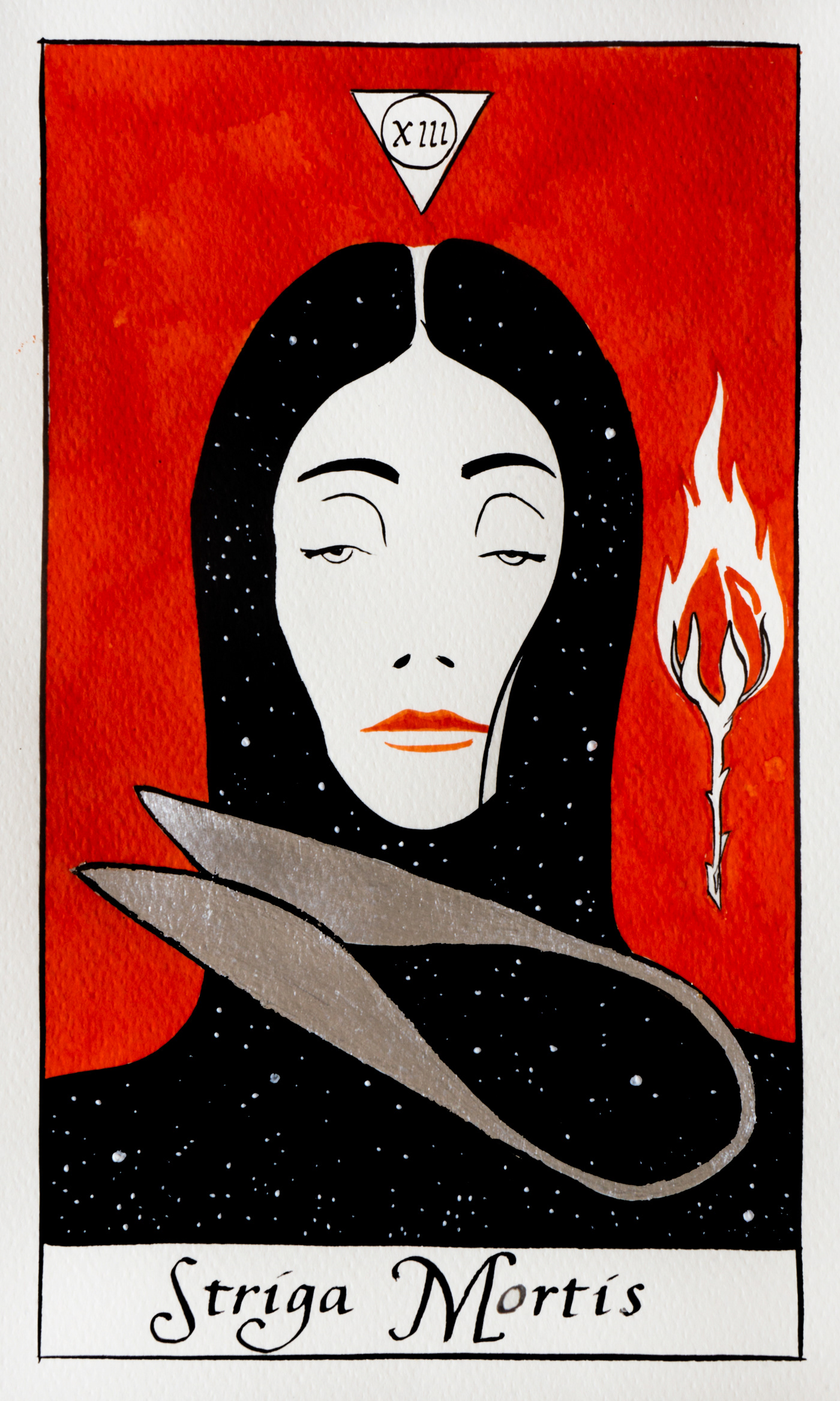
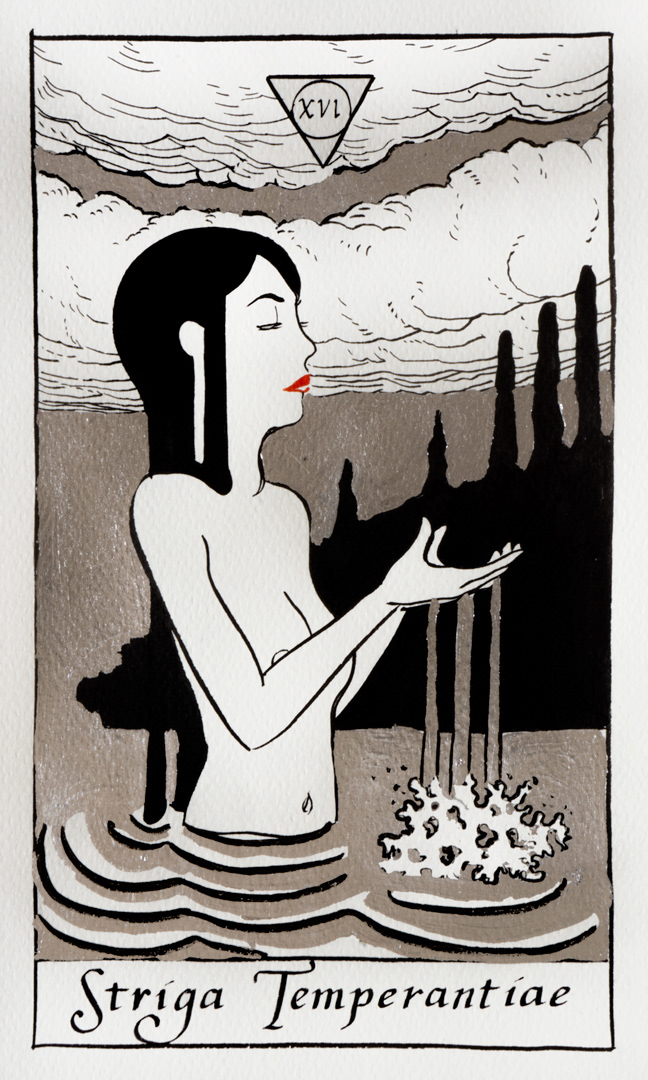

13 - Striga Mortis (La Morte / La Mort / The Death)
14 - Striga Temperantiae (La Temperanza / La Tempérance / The Temperance)
15 - StrigaDiaboli (Il Diavolo / Le Diable / The Devil)
14 - Striga Temperantiae (La Temperanza / La Tempérance / The Temperance)
15 - StrigaDiaboli (Il Diavolo / Le Diable / The Devil)

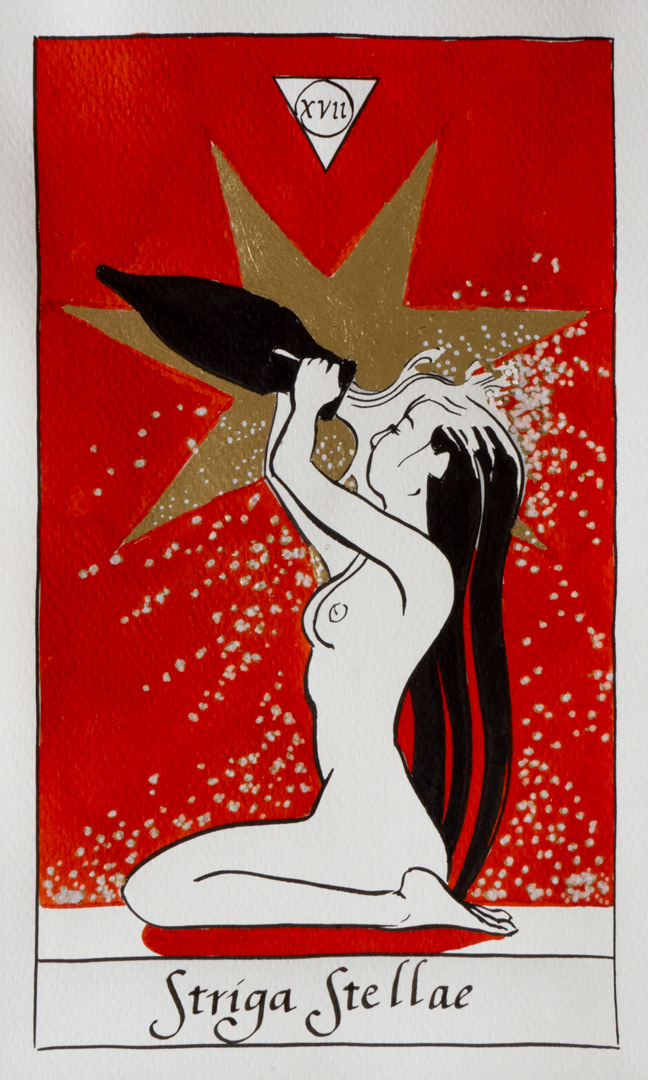
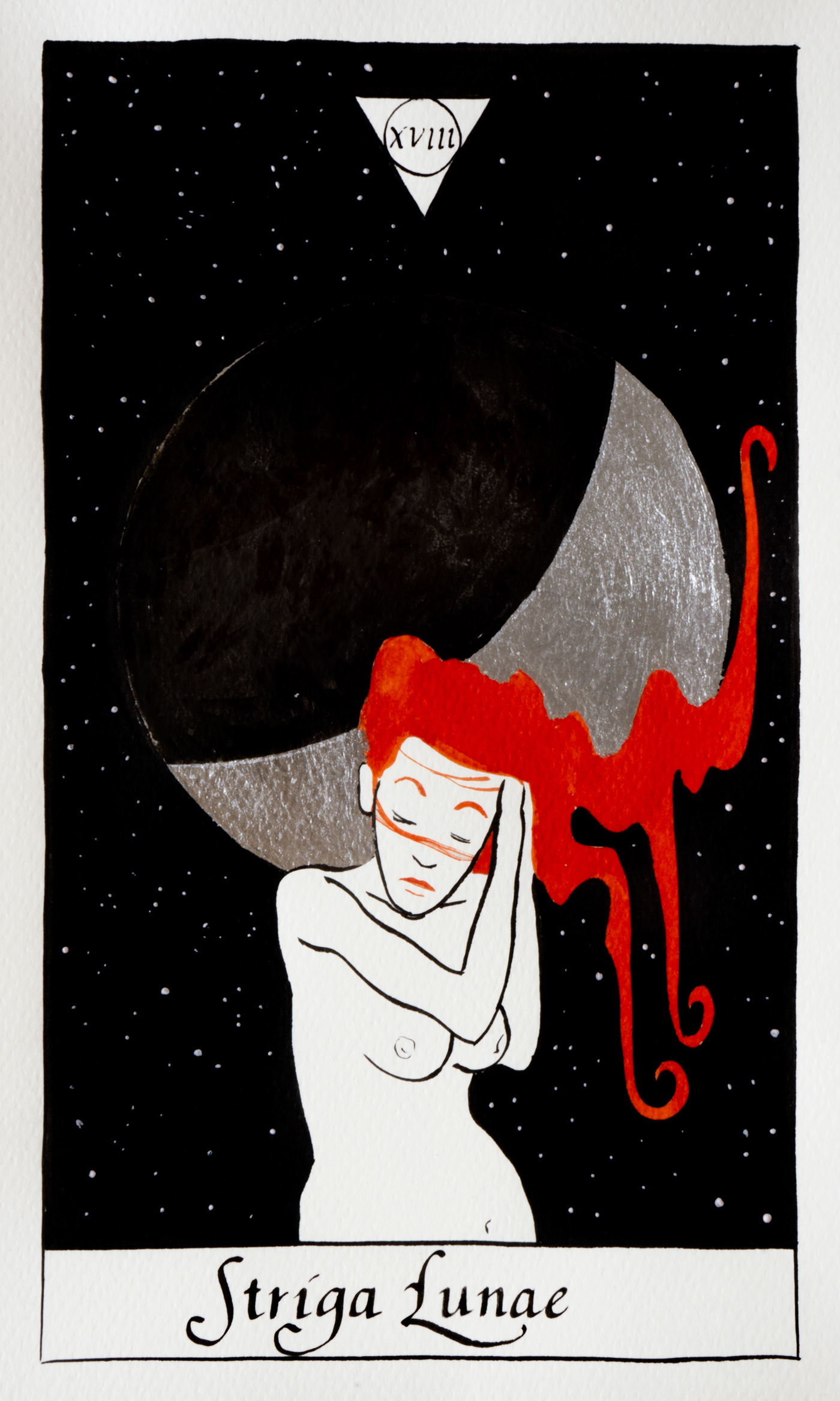

16 - Striga in Turri (La Torre / La Maison de Dieu / The Tower)
17 - Striga Stellae (La Stella / L'Etoille / The Star)
18 - Striga Lunae (La Luna / La Lune / The Moon)
17 - Striga Stellae (La Stella / L'Etoille / The Star)
18 - Striga Lunae (La Luna / La Lune / The Moon)
19 - Striga Solis (Il Sole / Le Soleil / The Sun)
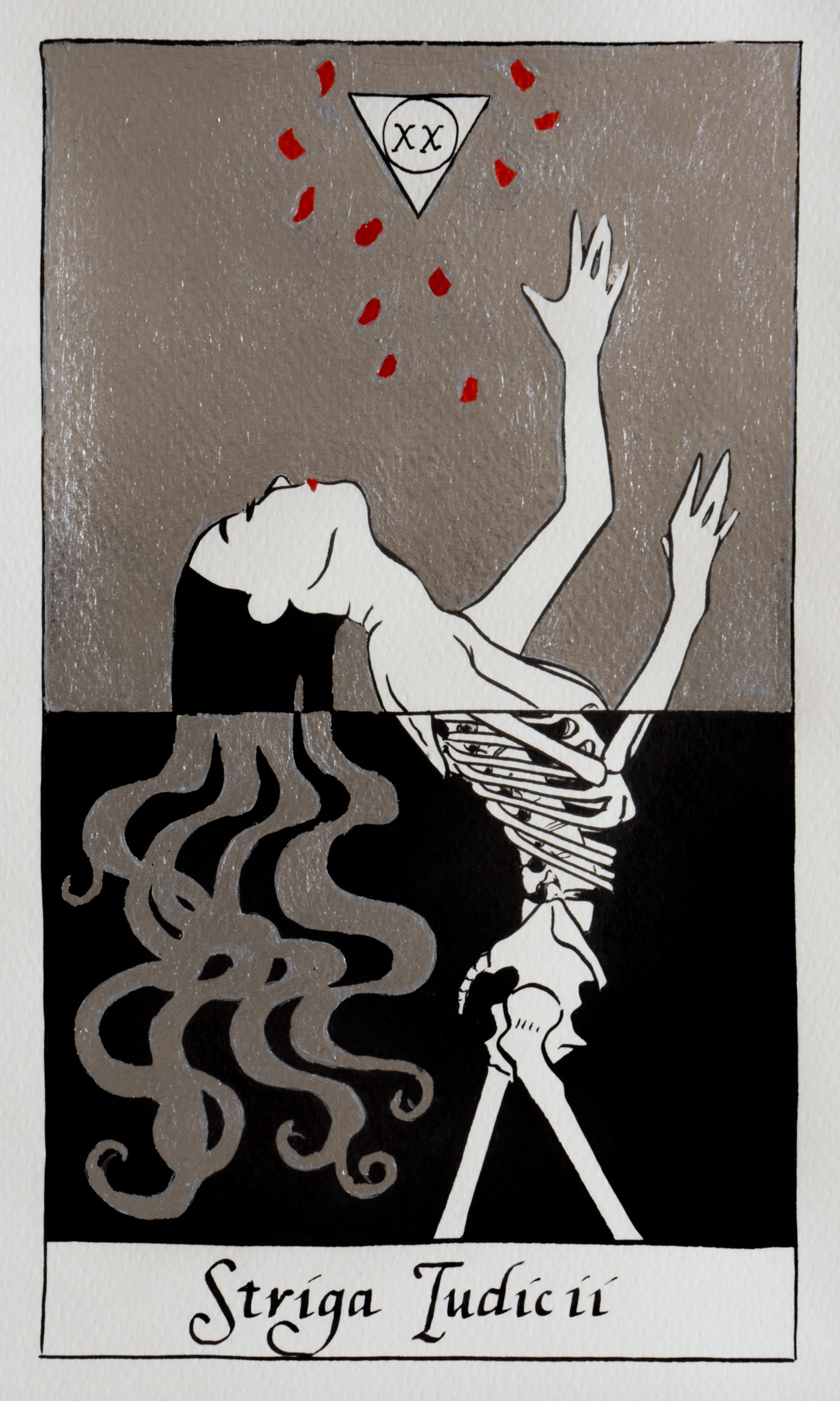


20 - Striga Iudicii (Il Giudizio/ Le Jugement / The Judgement
21 - Striga Mundi (Il Mondo / Le Monde / The World)
22 - Striga Insaniae (Il Matto / Le Fou / The Fool)
21 - Striga Mundi (Il Mondo / Le Monde / The World)
22 - Striga Insaniae (Il Matto / Le Fou / The Fool)
Nel 2024 questo progetto prendera vità con una campagna crowdfunding.
Se sei interessato per rimanere aggiornato scrivi una mail a: a.ardoq@gmail.com
mettendo in oggetto "Strigarum Arcana" e il tuo nome.
Se sei interessato per rimanere aggiornato scrivi una mail a: a.ardoq@gmail.com
mettendo in oggetto "Strigarum Arcana" e il tuo nome.
In 2024, this project will come to life with a crowdfunding campaign.
If you are interested in staying updated, please write an email to: a.ardoq@gmail.com,
with the subject line 'Strigarum Arcana' and your name.
If you are interested in staying updated, please write an email to: a.ardoq@gmail.com,
with the subject line 'Strigarum Arcana' and your name.
Il Nome delle carte
The card's Name
The card's Name
I nomi delle carte sono in Latino: il termine "Striga" fa riferimento ad una interpretazione rinascimentale della lingua latina.
Per la stesura dei nomi mi sono avvalso della preziosissima consulenza della Professoressa Valeria Rivosecchi, studiosa latinista, e della Dott.sa Sara Cambrini, docente di Paleografia all'Università di Urbino.
Per la stesura dei nomi mi sono avvalso della preziosissima consulenza della Professoressa Valeria Rivosecchi, studiosa latinista, e della Dott.sa Sara Cambrini, docente di Paleografia all'Università di Urbino.
The names of the cards are in Latin: the term "Striga" refers to a Renaissance interpretation of the Latin language.
For the drafting of the names I availed myself of the invaluable advice of Professor Valeria Rivosecchi, a Latin scholar, and of Dr. Sara Cambrini, professor of Paleography at the University of Urbino.
Breve Storia del Mazzo dei Tarocchi
Brief History of the Tarot Deck
Brief History of the Tarot Deck
Il mazzo dei Tarocchi compare per la prima volta in Italia, a metà del XV secolo.
Il Più antico mazzo conosciuto è il mazzo Visconti di Modrone, o conosciuto anche con il nome "Tarocchi Cary-Yale" è datato 1442-1447 ( conservato nella Biblioteca della Università di Yale, New Haven, USA). La datazione di questo mazzo è certa perchè il simbolo dei Denari riportato sul mazzo rappresenta il Fiorino d'oro coniato a Milano tra il 1442 e il 1447. Di questo mazzo restano solo 11 carte.
Il mazzo Visconti Sforza, realizzato tra il 1450 e il 1451 è in assoluto il meglio conservato, di cui ci rimangono ben 74 carte su 78.
Il Più antico mazzo conosciuto è il mazzo Visconti di Modrone, o conosciuto anche con il nome "Tarocchi Cary-Yale" è datato 1442-1447 ( conservato nella Biblioteca della Università di Yale, New Haven, USA). La datazione di questo mazzo è certa perchè il simbolo dei Denari riportato sul mazzo rappresenta il Fiorino d'oro coniato a Milano tra il 1442 e il 1447. Di questo mazzo restano solo 11 carte.
Il mazzo Visconti Sforza, realizzato tra il 1450 e il 1451 è in assoluto il meglio conservato, di cui ci rimangono ben 74 carte su 78.
The Tarot deck appears for the first time in Italy, in the mid-15th century. The oldest known deck is the Visconti di Modrone deck, or also known by the name "Cary-Yale Tarot" is dated 1442-1447 (kept in the Yale University Library, New Haven, USA). The dating of this deck is certain because the symbol of Coins shown on the deck represents the Gold Florin minted in Milan between 1442 and 1447. Only 11 cards remain of this deck. The Visconti Sforza deck, made between 1450 and 1451 is by far the best preserved, of which 74 out of 78 cards remain.
La leggenda delle "antiche origini Egiziane"
The legend of "ancient Egyptian origins"
The legend of "ancient Egyptian origins"
Dopo la campagna d'Egitto di Napoleone (1798-1801) si diffuse per l'Europa la passione per l'Egittologia. Naccquero così le prime leggende su un'ipotetica antichissima origine egizia del mazzo dei Tarocchi.
Ci tengo a precisare che non è mai stata trovata alcuna prova dell'esistenza dei tarocchi prima del 1442 in nessun paese del bacino del mediterraneo, con cui gli antichi Egizi commerciavano. In Italia, al tempo degli antichi romani esistevano molti templi dedicati alle divinità egizie, di cui sono rimaste diverse tracce. Ma del mazzo dei Tarocchi non c'è la minima ombra.
Ci tengo a precisare che non è mai stata trovata alcuna prova dell'esistenza dei tarocchi prima del 1442 in nessun paese del bacino del mediterraneo, con cui gli antichi Egizi commerciavano. In Italia, al tempo degli antichi romani esistevano molti templi dedicati alle divinità egizie, di cui sono rimaste diverse tracce. Ma del mazzo dei Tarocchi non c'è la minima ombra.
After Napoleon's Egyptian campaign (1798-1801) the passion for Egyptology spread throughout Europe. Thus were born the first legends on a hypothetical very ancient Egyptian origin of the Tarot deck. I would like to clarify that no evidence of the existence of tarot cards before 1442 has ever been found in any country of the Mediterranean basin, with which the ancient Egyptians traded. In Italy, at the time of the ancient Romans there were many temples dedicated to the Egyptian gods, of which several traces remain. But there is not the slightest shadow of the Tarot deck.
Origine del Nome "Tarocchi"
Origin of the Name "Tarot"
Il gioco dei Trionfi
I primi mazzi dei tarocchi, realizzati in Italia settentrionale nella seconda metà del XV secolo, si chiamavano "mazzi dei Trionfi"
Il nome "Trionfi" viene fatto risalire al poemetto allegorico "I Trionfi" di Francesco Petrarca (1351), le cui sei allegorie sono state spesso rappresentate in modo simile alle icone trionfali dei tarocchi.
I primi mazzi dei tarocchi, realizzati in Italia settentrionale nella seconda metà del XV secolo, si chiamavano "mazzi dei Trionfi"
Il nome "Trionfi" viene fatto risalire al poemetto allegorico "I Trionfi" di Francesco Petrarca (1351), le cui sei allegorie sono state spesso rappresentate in modo simile alle icone trionfali dei tarocchi.
Trionfo dell'Amore = Amanti,
Trionfo della Castità = Temperanza,
Trionfo della Morte = Morte,
Trionfo della Fama = Giudizio,
Trionfo del Tempo = Eremita,
Trionfo dell'Eternità = Mondo.
Trionfo della Castità = Temperanza,
Trionfo della Morte = Morte,
Trionfo della Fama = Giudizio,
Trionfo del Tempo = Eremita,
Trionfo dell'Eternità = Mondo.
Ma mentre nelle allegorie del Petrarca le figure allegoriche sono sempre a bordo di un carro trionfale, questo non avviene per le figure dei tarocchi; inoltre, i trionfi del Petrarca sono solo sei contro i ventuno trionfi dei tarocchi, ed è difficile trovare una corrispondenza per trionfi come la Papessa o L'Appeso.
Quando compare per la prima volta il nome "Tarocchi"?
La prima volta che compare la parla "Tarocchi" è nel 1516 nel "registro di Guardaroba" del Duca di Ferrara Alfonso II D'Este. Sul significato di questa parola ci sono state molte speculazioni, sopratutto a cavalo del 1700, quando, con il fiorire delle sette occultiste, si cercò le risposte nella simbologia della cabala e nei geroglifici.
Cosa significa "Tarocco"?
La prima volta che compare la parla "Tarocchi" è nel 1516 nel "registro di Guardaroba" del Duca di Ferrara Alfonso II D'Este. Sul significato di questa parola ci sono state molte speculazioni, sopratutto a cavalo del 1700, quando, con il fiorire delle sette occultiste, si cercò le risposte nella simbologia della cabala e nei geroglifici.
Cosa significa "Tarocco"?
Un plausibile etimologia, avvallata dal Prof. Giordano Berti, fa risalire il termina "Tarocco" dal vernacolo ferrarese "taroccar" nel senso di litigare, discutere. A sua volta derivato dal latino volgare "altercare", litigare appunto. Questo perchè nella dinamica del gioco delle carte dei Trionfi/Tarocchi la risposta con una carta di punteggio superiore era definita come disputa, alterco, discussione.
The game of Triumphs
The first tarot decks, made in northern Italy in the second half of the 15th century, were called "mazzo dei Trionfi" ("decks of the Triumphs").
The name "Trionfi" (Triumphs) is traced back to the allegorical poem "I Trionfi" by Francesco Petrarca (1351), whose six allegories have often been represented in a similar way to the triumphal icons of the tarot.
The name "Trionfi" (Triumphs) is traced back to the allegorical poem "I Trionfi" by Francesco Petrarca (1351), whose six allegories have often been represented in a similar way to the triumphal icons of the tarot.
Triumph of Love = Lovers,
Triumph of Chastity = Temperance,
Triumph of Death = Death,
Triumph of Fame = Judgment,
Triumph of Time = Hermit,
Triumph of Eternity = World.
But while in Petrarch's allegories the allegorical figures are always aboard a triumphal chariot, this does not happen for the figures of the tarot; moreover, Petrarch's Triumphs are only six against the twenty-one trumps of the tarot, and it is difficult to find a match for trumps such as the Popess or The Hanged Man.
When does the name "Tarot" appear for the first time?
The name Tarot derives from the Italian Tarocchi.
When does the name "Tarot" appear for the first time?
The name Tarot derives from the Italian Tarocchi.
The first time that the word "Tarocchi" appears is in 1516 in the "wardrobe register" of the Duke of Ferrara Alfonso II D'Este. There have been many speculations on the meaning of this word, especially in the 1700s, when, with the flourishing of the occultist sects, the answers were sought in the symbolism of the cabala and in the hieroglyphics.
What does "Tarocchi" (Tarot) mean?
A plausible etymology, endorsed by Prof. Giordano Berti, traces the term "Tarocco" from the Ferrara vernacular "taroccar" in the sense of quarreling, arguing. In turn derived from the vulgar Latin "altercare", to quarrel. This is because in the dynamics of the Triumph / Tarot card game the answer with a higher score card was defined as dispute, altercation, discussion.
STRIGARUM ARCANA o il Mazzo delle Streghe
STRIGARUM ARCANA or the Deck of Witches
Ho disegnato il mazzo dei tarocchi partendo dalla mia poetica che vede la Strega come rappresentazione suprema dello spirito libero.
Nello Strigarum Arcana (Mazzo deggli Arcani delle Streghe) ho eliminato tutti i riferimenti possibili alle figure maschili o alla divinità maschiliste, totalitarie e misogine. Per questo motivo le Streghe di questo mazzo non vogliono avere nulla a che spartire con la cabbala, che è appunto la massima espressione divinatoria di una religione monoteista in voga da parecchi secoli.
Alcune carte dello Strigarum Arcana sono quindi state disegnate con il preciso intento di esaltare la libertà individuale.
Nello Strigarum Arcana (Mazzo deggli Arcani delle Streghe) ho eliminato tutti i riferimenti possibili alle figure maschili o alla divinità maschiliste, totalitarie e misogine. Per questo motivo le Streghe di questo mazzo non vogliono avere nulla a che spartire con la cabbala, che è appunto la massima espressione divinatoria di una religione monoteista in voga da parecchi secoli.
Alcune carte dello Strigarum Arcana sono quindi state disegnate con il preciso intento di esaltare la libertà individuale.
I designed the tarot deck starting from my poetics that sees the Witch as the supreme representation of the free spirit.
In the Strigarum Arcana (Deck of the Arcana of the Witches) I have eliminated all possible references to male figures or to the masculine, totalitarian and misogynistic divinity. For this reason the Witches of this deck do not want to have anything to do with the Kabbalah, which is precisely the maximum divinatory expression of a monotheistic religion in vogue for several centuries.
Some cards of the Strigarum Arcana have therefore been designed with the specific intent of enhancing individual freedom.
Have a good time.
In the Strigarum Arcana (Deck of the Arcana of the Witches) I have eliminated all possible references to male figures or to the masculine, totalitarian and misogynistic divinity. For this reason the Witches of this deck do not want to have anything to do with the Kabbalah, which is precisely the maximum divinatory expression of a monotheistic religion in vogue for several centuries.
Some cards of the Strigarum Arcana have therefore been designed with the specific intent of enhancing individual freedom.
Have a good time.